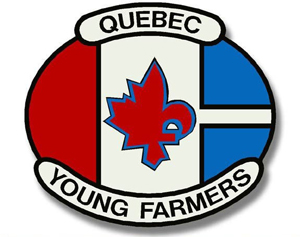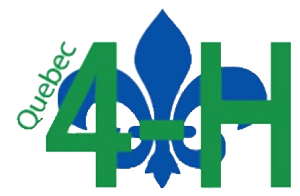History of 4-H
4-H started in the United States in 1901 with a single seed; well technically a bag of seeds but a single seed has that wow factor we’re going for. President Orwell of the Farmer’s Institute of Macoupin County, Missouri offered local boys a bag of corn seed to grow and show at the St. Louis Fair in the hope of establishing a youth component in the agriculture sector. Over 500 boys requested seed in this season making Orwell’s concept a roaring success. School authorities, parents, and the agriculture industry revered this simple idea and it sparked the 4-H movement.
4-H came to Canada in 1913 where it found its first home in Roland, Manitoba. The Department of Agriculture donated one dozen purebred poultry eggs, purebred potatoes and seed to Manitoba youth for them to raise and grow over a period of several months. During this time a Club organizer checked on the boys and girls and provided them with information to help them get the best outcome for their crops and poultry. This initiative began the Boys’ and Girls’ club, which was a predecessor of 4-H. This club established many of the concepts that are still involved in 4-H today including:
-
Age regulations
-
Members complete a project
-
Members are guided by a leader who supervises them and provides constructive feedback
-
The project is presented at an achievement day
-
The program should develop agriculture or homemaking / life skills
Within this club the concept of “Learn To Do By Doing” was also born. The entire premise of the club was learning through youth engagement and hands on involvement. Although the official 4-H motto was not established until 1952, the basis for the 4-H learning approach was well underway. Folks were noticing the positive impact the Boys’ and Girls’ club was producing for youth in their local areas. The large success of the program in Manitoba combined with a movement that focused on formal agriculture education for youth caused the Boys’ and Girls’ club to spread across the country.
The 1950’s brought about a great deal of change for the Boys’ and Girls’ club program. First of all, in 1952 the program name was changed to 4-H Canada. The name 4-H was selected to represent the 4 H’s in the pledge: head, heart, hands and health. At this point the 4-H logo was also selected. 4-H counterparts in the United States were already using the four leaf clover for the logo so 4-H Canada decided to adopted this logo and add a banner at the bottom with the word “Canada”. The learning to do by doing approach made headway and “Learn To Do By Doing” became the official 4-H motto. During the mid to late 1950’s there was also a critical refocus of 4-H initiatives. A switch was seen that placed the focus on the individual Members and their development rather than the project. The Club goal switched from the best calf or crop to the most well rounded individuals and best community contributing citizens. This is the focus 4-H still holds today; building leadership and life skills that equip youth with the tools they need to reach their full potential and become conscious and contributing citizens.
Clubs began to appear in Quebec with several of today’s 4-H clubs taking strong footholds in their communities in the 1920s and 1930s. Many were then known as young farmers’ clubs. These clubs existed long before The Quebec Young Farmers’ Provincial Federation (QYF) was formed in 1969. They each had their own activities and prospered within their communities but were not really aware that there were other clubs similar to them scattered all around Quebec. In 1967, MacDonald College was approached by two groups of 4-H’ers from Alberta and Ontario to set up an exchange with young Quebecers. The Quebec Farmers’ Association became involved in the project and sent out applications to young farmers’ clubs. Twelve people were chosen to participate. These young people acted as hosts to the Alberta visitors and then traveled west to complete the exchange. When the Quebec delegates returned from Alberta, they were very impressed with the provincial organization of 4-H. They recognized how useful such an association in Quebec could prove to be and at a reunion in December 1969 they acknowledged the need for young Quebecers to form a provincial association. In January 1970, the Quebec Young Farmers’ Provincial Federation was formally constituted and at the time was made up of 11 clubs: Brome, Hatley, Haut St. François, Howick, Huntingdon, Lachute, Monterégie, Ormstown, Richmond, Sawyerville and Shawville. The Quebec Farmers’ Association and Macdonald College were instrumental to the success of the new QYF federation. Several exchanges and leadership conferences were held in the early 1970s.
The first Provincial Rally, then known as Calf Rally, was held in 1976.
The organization became a partner of the Canadian 4-H Council in 1996.
In September 2002, the Quebec 4-H Association was created.
The 4-H program is still well rooted in a strong agriculture history but recognizes that everyone can benefit from the holistic and socially conscious approach 4-H takes to learning. Agriculture, food and the environment will always be an important part of the 4-H program, but Clubs that cover non-agriculture topics are also important to today’s youth. Youth in 4-H have the freedom and ability to tackle the issues that matter to them most; this makes the 4-H program unique and ever changing.




